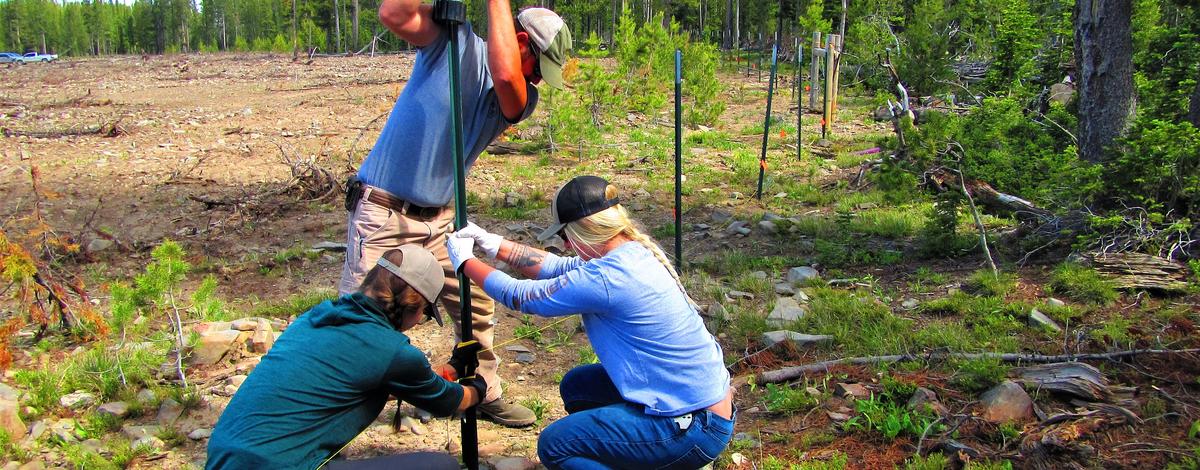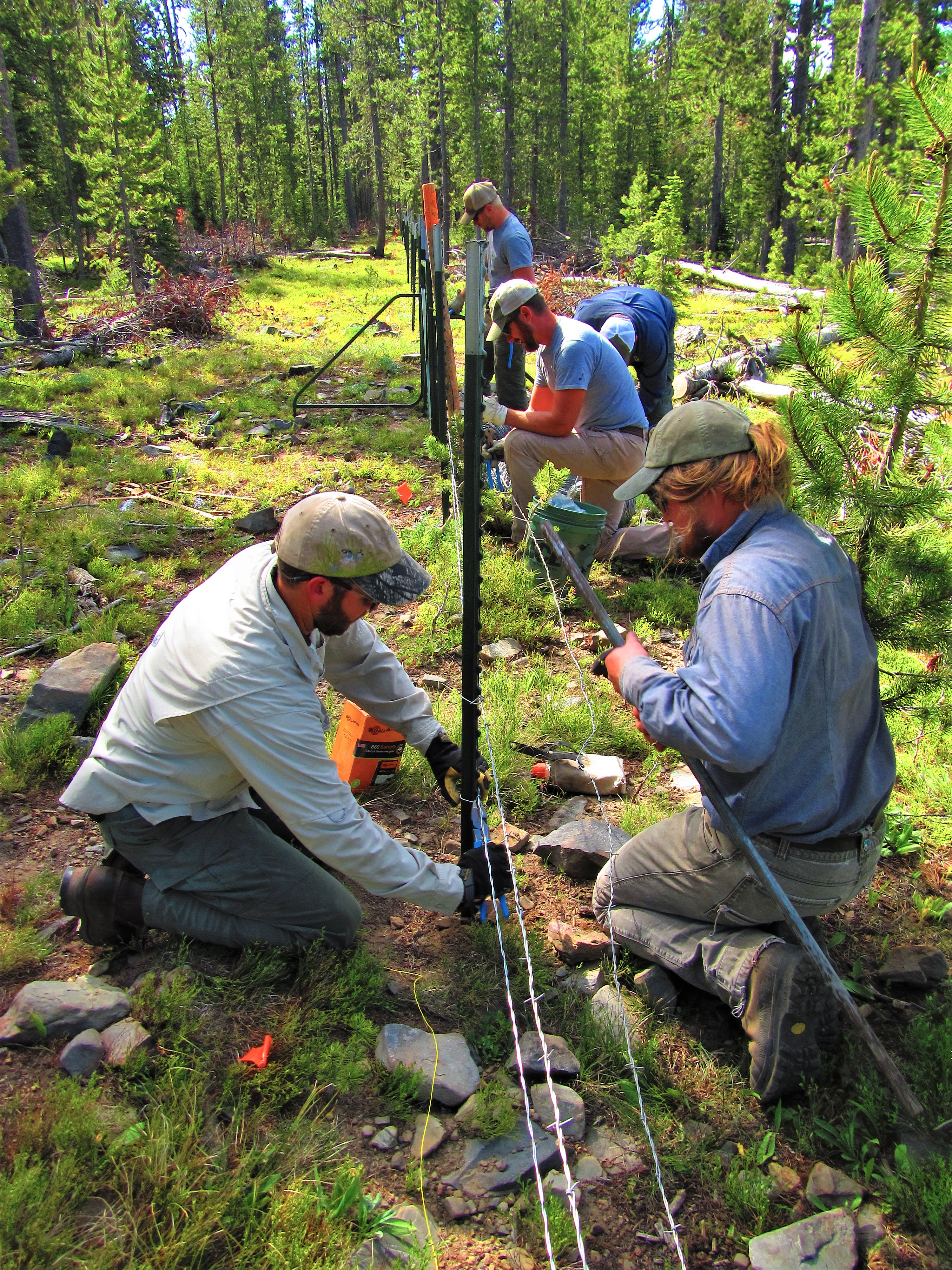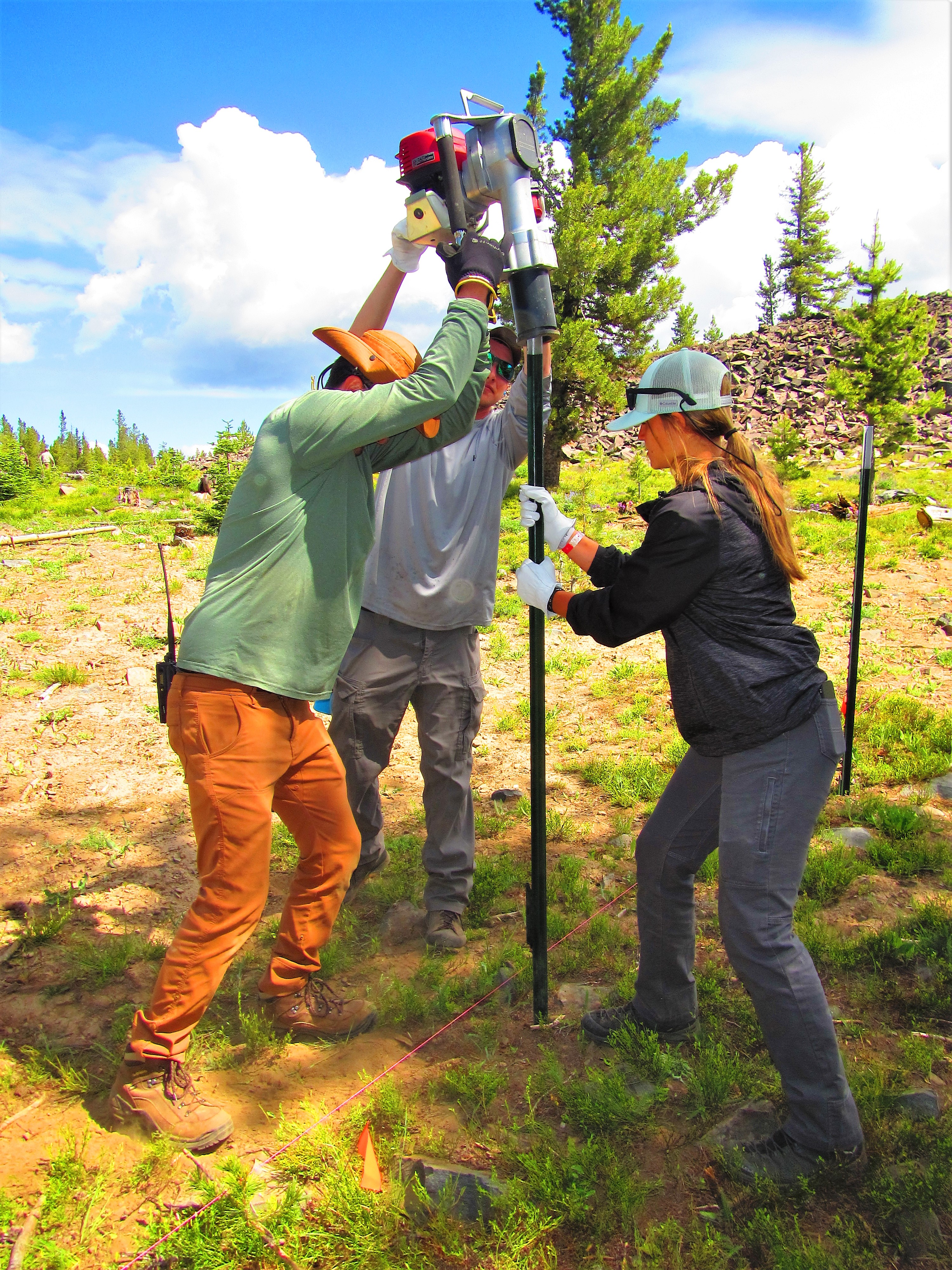Nestled high in the Jessy Creek drainage just west of Salmon, ID, is a sensitive wetland that provides important habitat for a diversity of wildlife, as well as serves as one of the main water sources for the city.

Agencies continue to protect city watershed and sensitive wetlands near Salmon
Over 2,700 feet of new wildlife-friendly fence recently constructed to protect area

To help protect the area, over 30 employees from the Salmon-Challis National Forest and Idaho Department of Fish and Game teamed-up July 13 to construct an additional 2,700 feet of wildlife-friendly fence. The bottom wire is slightly higher, and the top wire is slightly lower than traditional livestock fences. These modified heights, combined with the two wire strands being smooth rather than barbed, dramatically decreases the risk of wildlife entanglements resulting in injury or death.
Over the past five years, 7,270 feet of fence has been constructed in the area, including over 3,000 feet of fence surrounding a unique wetland, referred to as a fen. Fens are permanently saturated wetlands that provide important amphibian and wildlife habitat, as well as provide important sources of municipal water. The unique wetland and surrounding area also provide crucial fawning and calving habitat for deer and elk.
“This project has been an important partnership and we are very excited to have had great participation for this fence-building workday,” said Bobbi Filbert, Salmon-Cobalt/Leadore District Ranger.

The heat didn’t deter the employees who worked in groups to pound posts, stretch wire, and construct corner braces. Fish and Game donated all fencing material and supplies, and a Forest Service fire crew cleared brush and trees for the fence line.
“It was a hot day, but everyone enjoyed working hard to protect something so valuable,” said Jeff Richards, Fish and Game wildlife biologist who coordinated the joint effort.
Additional fence is planned in the area, as well as other forest health projects including aspen restoration, mechanical treatments such as mastication, and prescribed fire.
